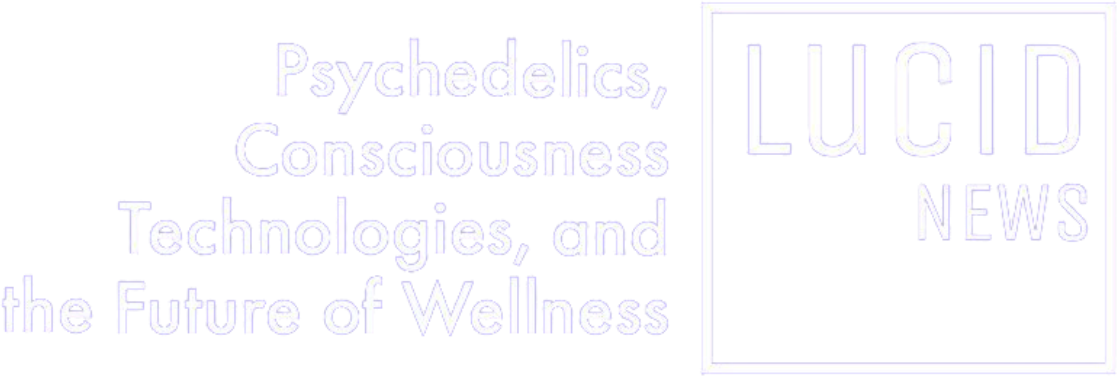Report: Day 2 of MAPS’s Psychedelic Science 2023

The MAPS’ 2023 Psychedelic Science conference continued with its second full day of panel discussions, offering participants a view into a range of topics impacting the psychedelic ecosystem, from the psychedelic industry and harm reduction to the neurological mechanisms of psychedelic substances. Lucid News is publishing a daily roundup of news from the conference, including coverage of workshops and briefings that took place yesterday.
(You can read our other coverage of Psychedelic Science 2023 here: Day 1, Day 3, and the Final Round-up.)
Are Ayahuasca’s Visual Effects Part of its Therapeutic Power?
When we close our eyes, we see nothing, yet still we think. According to Draulio Araujo, a professor of neuroimaging at the Federal University of Rio Grande do Norte in Brazil, ayahuasca changes this pattern: when we close our eyes, we see what we think.
Chronicling his and his colleagues’ nearly two decades of brain imaging research in his talk, “The Neural Basis of the Acute Effects of Ayahuasca,” on Wednesday, Araujo showed that ayahuasca decreases activity in the default mode network, the part of the brain that is active when we are at rest. However, ayahuasca increases the saliency network, or the network that supports what we pay attention to, as well as the areas of the brain responsible for vision. In summary, people get really interested in their own thoughts, which they can see with a different perspective on ayahuasca.
It is currently a debate among researchers whether psychedelics can exert their same therapeutic power without their hallucinogenic effects. Araujo and his colleagues’ research, which includes subjective reports of imbibers’ experiences, suggests that, at the very least, patients report it as an important part of their experience.
“As humans, we believe what we see,” he says.
However, it may be protective that we cannot see our thoughts without a psychedelic experience, Araujo adds.
“Can you imagine what it would be like, if every time we closed our own eyes, we were capable of seeing our own thoughts? Either that would be very disturbing, and we never close our eyes, or very addictive, and we’d be with our eyes closed all the time.” – Andrew Meissen
Films at PS23
A bit of old news, but films are never old, for sure not these…….
Eskawata Kayawai: The Spirit of Transformation is a documentary feature about the Hunt Kuin living in Nova Futura, which is one of five Huni Kuin tribal villages in Acre, in the northwestern Brazilian Amazon. The film was screened Wednesday at the Psychedelic Science 2023 conference.
The film showed that the missionaries forbade the use of medicinal plants and their practices. The tribes dissipated and by 2000, young adults had no knowledge of their history, never had seen face paint or headdresses. With the demarcation of land for the Hunt Kuin, leaders began asking their grandparents about the traditions of their people. They began to move from the cities where they had been assimilating back into the forest where the tribe reconfigured itself to resemble as it had been. Through the use of ayahuasca and the knowledge of the old pagé (shaman), they began to regain, relearn, reimagine their cultural roots. It’s an amazing story of young and old reclaiming a heritage that was almost lost.
Today a terrific trailer for Prescription X: The Rick Doblin Story was shown, a film that will not be released until after MDMA has been approved by the FDA. With great style, humor and, of course, seriousness, the epic is in great hands with producer/director Nirvan Mullick.
People can support the film here. – Maxi Cohen
What is the Cost of MDMA Commercialization?
In a presentation entitled “Preparing for commercialization of psychedelic-assisted therapy”, Michael Mulette, COO of the for-profit MAPS PBC, provided an overview of the complex series of steps he anticipated would be necessary to commercialize MDMA-assisted therapy which could take place as early as the fourth quarter of 2024 pending FDA approval. Insurance companies, patients, psychiatrists, therapists, the medical community at large, and others would be engaged to resolve many outstanding issues on the road to therapeutic delivery.
Mullette was very clear up front that many questions remain. He stated that “nobody has a recipe to accomplish this,” as “nobody has done this before,” and “there were lots of details to work out.”
The need is clear. Data from the presentation showed that 13 million adults in the U.S. suffer from PTSD. The military is a critical stakeholder as this therapy targets veterans who suffer from PTSD, but does not represent the largest group of patients. The largest cohort of potential recipients of this therapy were those exposed to sexual violence which made up 32.9%.
Mullette presented four pillars for a successful launch: the PTSD patient landscape of “right” patients for MDMA-assisted psychotherapy, provider education, patient access (including payment), and clinic readiness. Within these pillars, he stated that MAPS PBC intends to provide “targeted support” to focus limited resources on sites that are able to treat the most patients, and to provide on-demand resources to help providers guide and troubleshoot through treatment.
In the business track before the main Psychedelic Science 2023 conference on Tuesday, sector investors stated repeatedly that the cost of commercialization of a new drug typically cost $500 million to $1 billion. Mullette was asked whether MAPS will require that level of capital to make MDMA a commercial success. He acknowledged that it is very expensive to bring a new drug to market, to develop the data needed for the payors, to talk with the providers, and set infrastructure. He stated that MPBC “will do everything possible to make that number lower.”
“I don’t think we will need as much as traditional pharma companies,” said Mullette after his presentation. He did not explain why he thought MAPS PBC would need less funding than other pharma companies to bring MDMA-assisted therapy to market, but instead stressed the funds that MAPS has raised to date. “We have already raised 100M to support and that’s a tremendous amount in my view,” said Mullette.
But therein is the challenge. According to a presentation today by Psychedelic Alpha, where the $1 billion cost to develop a drug was reiterated, all of the public companies in the psychedelic sector combined have approximately $700 million in cash on hand. Over its history, MAPS has raised over $150 million in philanthropy and an additional $50 million from its Vine investment offering, of which the overwhelming majority has been spent on drug development. How will MAPS – and more broadly, all the other companies in the sector – raise the funds necessary to successfully commercialize MDMA, the very first psychedelic drug expected to come to market? – Bryan Lang
Can Psilocybin Offer Hope For Covid-Traumatized Clinicians?
“I feel more disposable than a used-up Covid swab,” said a subject in Dr. Anthony Back’s recent single-dose psilocybin-assisted therapy trial for doctors and nurses suffering from symptoms of depression and burnout as a result of frontline work during the Covid pandemic. Back presented early findings of the study Wednesday at the Psychedelic Science conference.
According to Back, 30 subjects were selected from the pool of 2,247 applicants who completed the prescreening questionnaire for the University of Washington study. “I could have done this study four times over,” Back said. His research shows that a substantial majority of frontline clinicians reported symptoms of anxiety (75%) and depression (74%), along with alarming rates of PTSD (38%) and self-harm (15%). At least a third have considered leaving the profession. “They feel abused by their healthcare systems,” Back asserted.
Subjects reported positive results arising from the treatment, with therapeutic experiences that included “being cared for, feeling everything, forgiving myself, being witnessed,” and finding meaning. During integration, subjects articulated greater capacity to decompress, check in on their own wellbeing, and develop healthier boundaries between their work and health. In the six months following the study, Back estimated 80% of participants changed jobs. The study is projected to be completed next spring. – Charles Lighthouse
Study Finds Low Personal Acceptance of Psychedelics Among U.S. Voters
A recent survey of registered U.S. voters by UC Berkeley Center for the Science of Psychedelics (BCSP) sheds light on the public’s perception of psychedelics and the communication challenges surrounding them. BCSP executive director Imran Khan, and project lead Taylor West presented an early look at the findings at Psychedelic Science on Wednesday.
While 78% of Americans support expanding psychedelic research, “most Americans are not yet on board with general acceptance of psychedelics,” West said. 69% of respondents said psychedelics aren’t for them and 61% said they’re not good for society. 39% of respondents view psychedelics as dangerous, and 38% believe they can have negative long-term health effects.
“With personal acceptance still so low, it seems to me that policy acceptance is sitting on a pretty brittle foundation,” West said. Khan suggested the gap between support for policy change and personal acceptance “shows tremendous scope for more communication and education about psychedelics.”
On July 12, Michael Pollan will join Khan and West for an online briefing about the survey’s findings. – Charles Lighthouse
The Underground Roots of Today’s Psychedelic Movement
While absent from most contemporary research, for the general population of psychedelics users, “LSD has been massively scaled in expanding awareness for over sixty years,” said Limina Foundation founder Adele Getty, M.A during her talk “Messages from the Underground & Other Elephants in the Room” presented Wednesday at Psychedelic Science 2023. Getty said alleged LSD chemist Leonard Pickard estimated that two billion doses of LSD were circulated during the War on Drugs.
According to Getty, underground care infrastructure developed alongside clandestine manufacturing and distribution.Therapist Leo Zeff introduced LSD and MDMA to an estimated 4,000 therapists during guided sessions he provided in the 70s and 80s. He also established the process for the nondirective style of guided psychedelic work, including trust in the client’s inner healer, blindfolds, music, hand-holding, confidentiality, and strict boundaries around sexual contact.
In 2010, Getty joined James Fadiman, Robert Jesse, Diane Darling, and Michael Ziegler in organizing the Guild of Guides. During their annual gatherings, this discreet body provided guidance about how to support ethical, legal, medical, and cybersecurity for communities using psychedelic substances. . “Confidentiality and trust [was] broken,” when a 2016 Rolling Stone article noted its existence, “so they stopped,” Getty said.
Getty noted that “The underground can contribute a wealth of knowledge to the field and they need to be treated fairly for their experience. It also has a shadow and there needs to be accountability for bad actors.” – Charles Lighthouse
Teens Need Real Talk About Drugs
More than 300 parents attended a panel discussion that emphasized the importance of drug education and open conversations with young people Wednesday at the Psychedelic Science conference.
“Helping young people make risk-informed decisions for themselves helps them make better decisions overall,” said Fireside Project’s Director of Outreach Stefanie Jones, who oversaw SafetyFirst, a harm reduction-based curriculum for high school students created when she served at that Drug Policy Alliance. Jones urges parents to talk to young people about factors including dose, neurological impact, set and setting – such as who they’re with and the state of their internal landscape, and their cultural context.
“The risk for a young white person using drugs in front of police is not going to be the same as for a young person of color,” Jones said.
The panelists stressed the significance of honest and open discussions. Drug Education Consulting founder Mikayla Hellwich said parents who have made peace with their own drug use, were informed about drugs generally, and cultivated an attitude of open curiosity tend to have more successful conversations with their children.
“Our job is to guide them to a more balanced perspective about drugs,” said harm reduction specialist Rhana Hashemi. “They deserve honest information and to ask questions and receive support, regardless of what their personal choices are.” – Charles Lighthouse
Edited by Ken Jordan, Ann Harrison, and Faye Sakellaridis
Featured Image: A discussion between Bob Jesse and Michael Pollan at the Colorado Convention Center courtesy of Nicki Adams.








